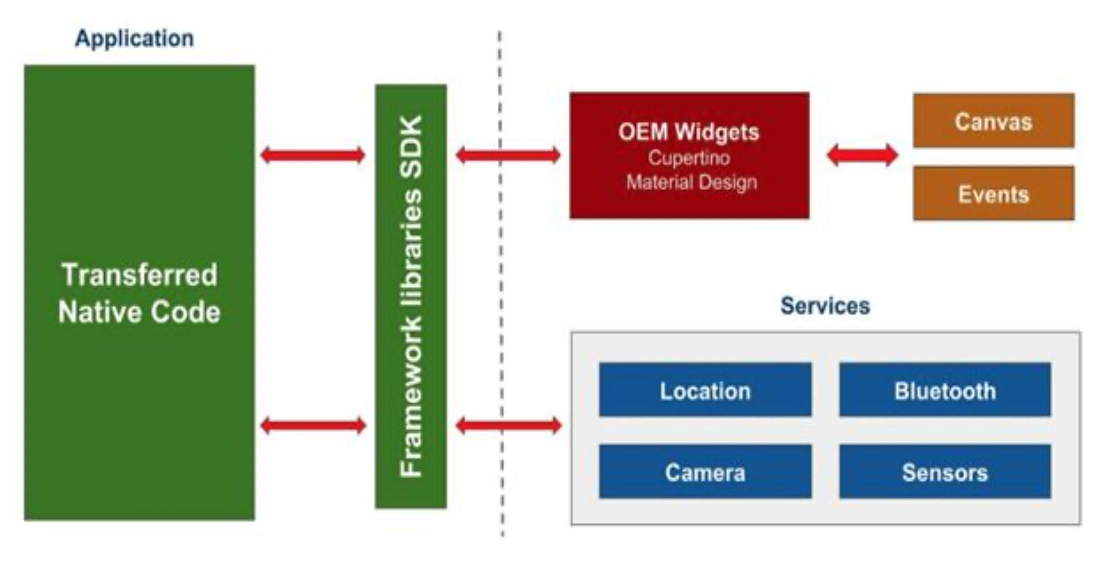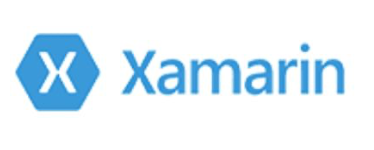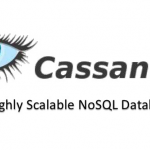Nowadays smartphones use multiple operating systems, to let users choose the platform that better suits their needs. To sell competitive apps and cover a maximum audience, you need to keep in mind the features and requirements of all the most OSs, such as Android, iOS and Windows.
Does this mean that you need to create multiple versions of the same app, wasting tons of time, resources and efforts that can be spent on the projects? Cross-platform app development tools take this load by providing the software applications that are compatible with multiple mobile operating systems by developing a single universal codebase.

What is cross-platform development?
Cross-platform is a framework through which a mobile app can run on multiple platforms such as Android, iOS and Windows. The developers need to write the code only once and can run it anywhere for any platform they want.
What are cross-platform types?
There are 2 types of cross-platform apps:
- Native Cross-Platform Apps
- Hybrid Cross-Platform Apps
Native Cross-Platform Apps

Every major mobile operating system has its own SDK (Software Development Kit) to create mobile apps. These SDKs also have preferred programming languages which are supported by the OS vendor. For example, for iOS, Objective-C and Swift are the preferred programming languages supported by Apple, whereas for Android, Java is the preferred language supported by Google. Generally, apps created with these languages using the official SDK are called “native apps”.
However, it is possible to use APIs (Application Programming Interface) provided by the native SDK, in other programming languages which are not supported by the OS vendor. This is how “cross-platform” native apps are created. Generally, a third-party vendor chooses a programming language and creates a unified API on top of the native SDKs provided by the various OS vendors. Using this unified API, it is possible to support multiple operating systems with a single code base. The third-party vendor generally provides an IDE (Integrated Development Environment) which handles the process of creating the native application bundle for iOS and Android from the single cross-platform codebase.
Since the final app produced still uses the native APIs, the cross-platform native apps can achieve near native performance without any visible lag to the user.
Popular Native Cross-Platform Frameworks:

-
Xamarin
Xamarin extends the .NET platform with tools and libraries specifically for building cross platform apps.
Features:
- Released by Microsoft.
- Built on C# language.
- Open-source cross-platform.

-
React Native
With React Native you are building a truly native mobile app where React Native components are transpiled to native iOS and Android components.
Features:
- Released by Facebook.
- Built on advanced technologies such as JavaScript with JSX, ES6 and React.JS.
- Open-source cross-platform.
- Renders Native Application development in an efficient way.
- You get the compatibility of a wide range of third-party plugins.
- Less usage of memory.

-
Flutter
Flutter is a fast cross platform framework used for developing high-quality native interfaces.
Features:
- Released by Google.
- Built on Dart language.
- It is an open-source platform
- You will also be benefited with a wide range of widgets which can be customized as per the specific needs.
- It gives good competition to React Native platform in terms of performance and responsiveness.
- Easy to use Interfaces.
Hybrid Cross-Platform Apps

Mobile apps are essentially GUI applications. Most mobile apps depend on backend web services for large parts of their business logic. Roughly speaking, in mobile apps, especially in the business process automation domain, almost 60% of the code deals with creating and managing the GUI.
iOS, Android and Windows Phone, all have a very advanced browser component in their SDKs. By leveraging this WebView component, programmers are able to use standard HTML5 web technologies to design and program parts of their application. So, in the end, the application is composed of at least a native frame and HTML/JavaScript executed in a WebView – which is why they are called “hybrid”. Application features which need sensor input like geolocation, camera or lower-level functions like accessing the file system usually use some JavaScript-to-native bridge provided by the hybrid application framework.
Popular Hybrid Cross-Platform Frameworks:

-
Cordova / PhoneGap
PhoneGap is one of the most frameworks which is used by many experienced developers, with the help of PhoneGap one can deliver feature-rich applications which are fully customized hybrid applications that work efficiently across multiple platforms and reach a large-scale audience in less time.
Features:
- Released by Adobe.
- Built on technologies like HTML JavaScript and CSS3 that gives a rich experience
- Open-source cross-platform.
- Can be extended with native plug-ins and let developers add more functionalities.

-
Ionic
Ionic is the most popular and favorite framework on the list for hybrid development. It is an HTML5 mobile app development framework which is designed with native-styled UI elements. It is used to build hybrid mobile apps. The cool thing about it is that Ionic has a rich set of advanced features such as mobile components, interactive paradigms, typography, and an extensible base theme that makes the job easier.
Features:
- Built on advanced technologies such as CSS, HTML AngularJS or JavaScript components.
- Support for Angular material design.
- Wrapping Angular Framework.
- Easily maintainable.
- Scalable.
- Easy to read.
- Open source & free.
Pros of cross-platform mobile app development
With careful planning around 50%-80% code reuse can be realized across-platforms. This results in faster development and reduced costs.
Cross-platform development provides more benefits during the maintenance period. If a bug is found in a common codebase it needs to be fixed only once.
Unit tests are required to be written only once for the common code; hence the saved budget can be used to write more thorough unit tests.
It is possible to use existing programming talent rather than learning platform specific development language.
Ideal for B2B apps and business process automation apps, where time to deployment and efficient utilization of resources is more important than sleek look and feel.
Cons of cross-platform mobile app development
In general, phones are not as powerful as desktops when it comes to raw processing power. Many mid-level and entry level phones don’t have enough hardware power to perform smooth HTML5 animations. Because of this HTML5 hybrid apps can lead to sluggish UI on low and mid-range phones. Also, since browser components have evolved with the operating systems, it’s relatively painful to support operating systems which are more than three years old.
Rendering modern HTML and CSS which uses advanced features like gradients requires a lot of CPU and GPU resources. Thus, HTML5 based apps consume significantly more battery compared to native apps or native cross-platform applications.
Usually, HTML5 hybrid apps depend on callback-style programming to communicate with native plugins, which makes the code unnecessarily complicated. Also, for some tasks, this might lead to impractically slow solutions.
Native cross-platform app SDKs are not mature yet. GUI needs to be coded multiple times to obtain platform specific look and feel.
Many successful apps are developed as native apps (either Android or iOS) because designing and building an app for multiple platforms with platform-specific user experience is too difficult. This is due to all platforms defining their own human interface guidelines and supporting them with a single code base turns out to be very challenging.
Mobile operating systems are evolving at a very rapid rate. Every year there are more and more features being added. This creates more work for the cross-platform SDK vendors who need to bring out new versions of their SDK within a short time after the release of a new operating system version. Sometimes, it also requires a lot of work on the developer’s part to upgrade an app to newer versions of the cross-platform SDK.
Conclusion
Cross-platform development can greatly accelerate and improve the cost-efficiency of projects geared to multiple OSs. It gives a competitive edge to app builders who want to reach a large customer audience and saves money on development costs.
Comments
a great article and very useful
very great information
Add new comment













